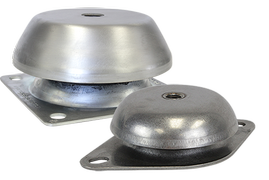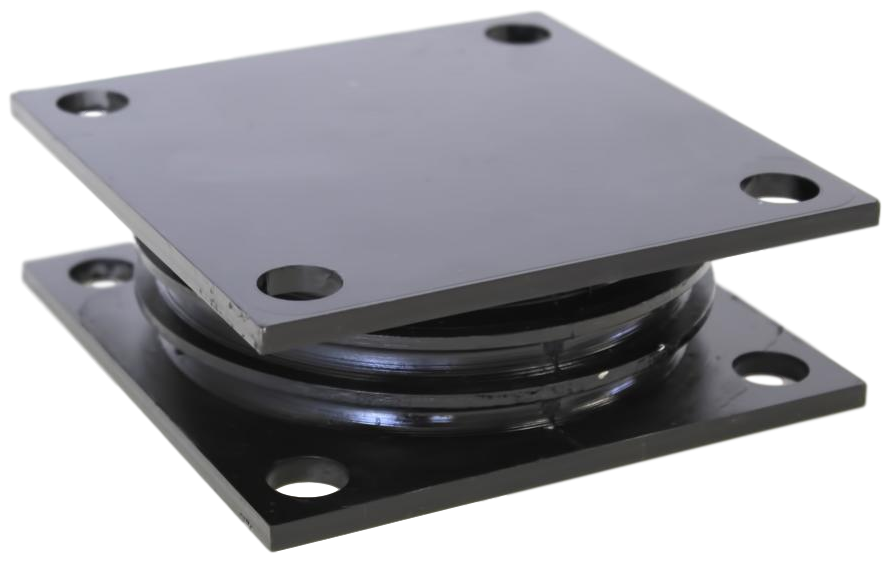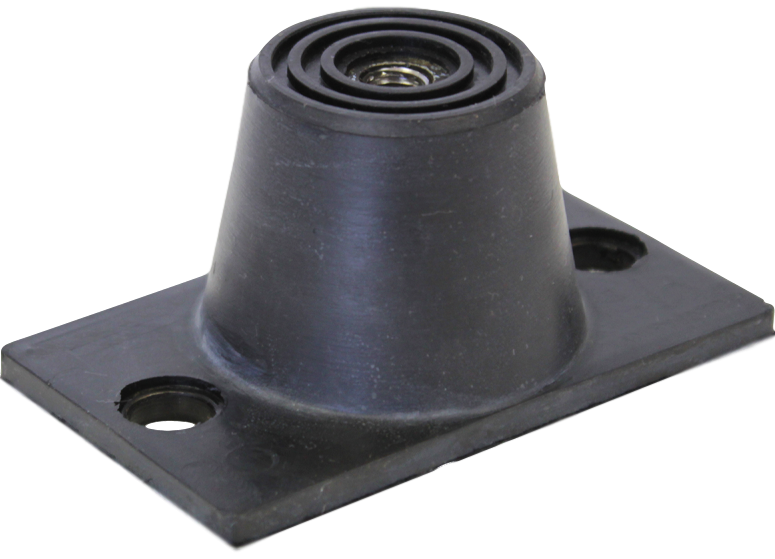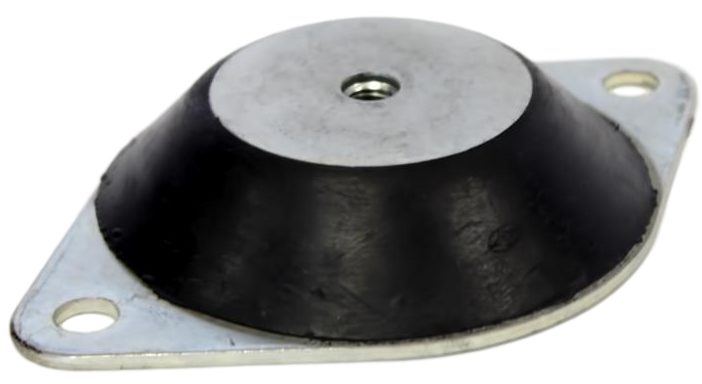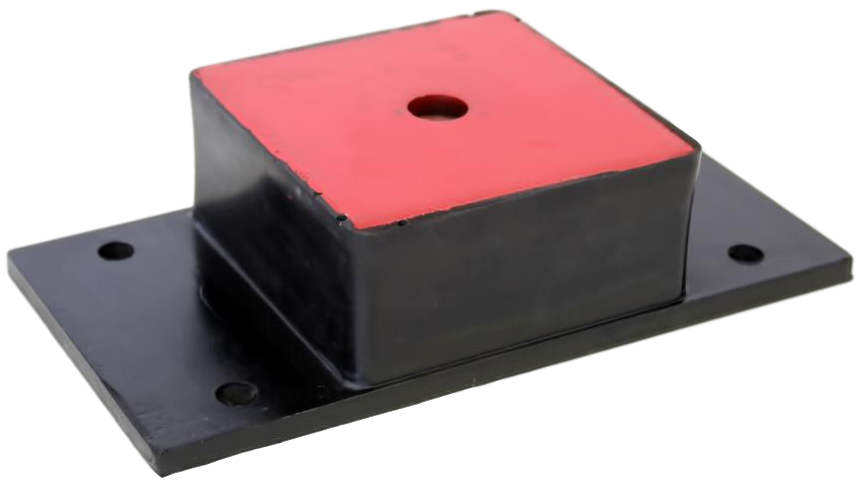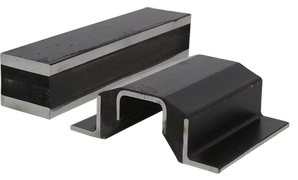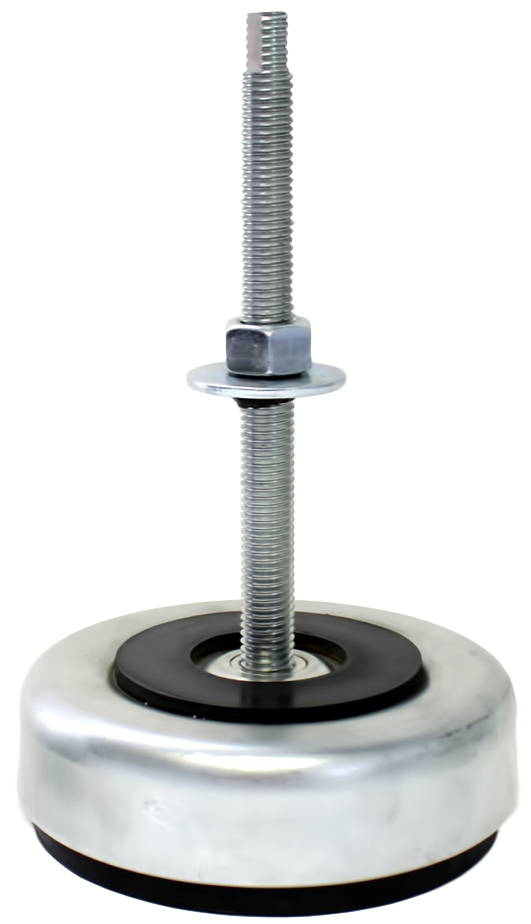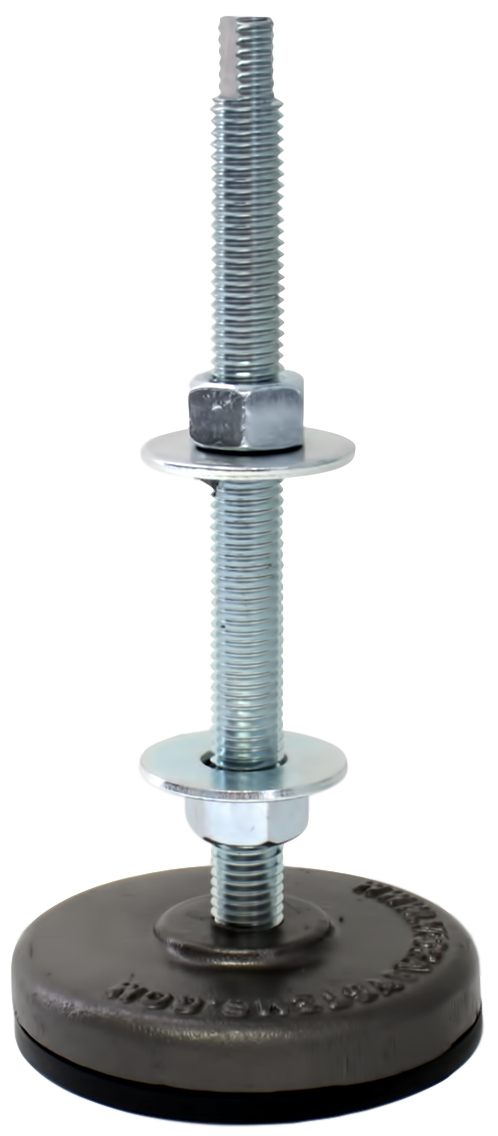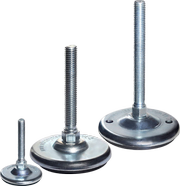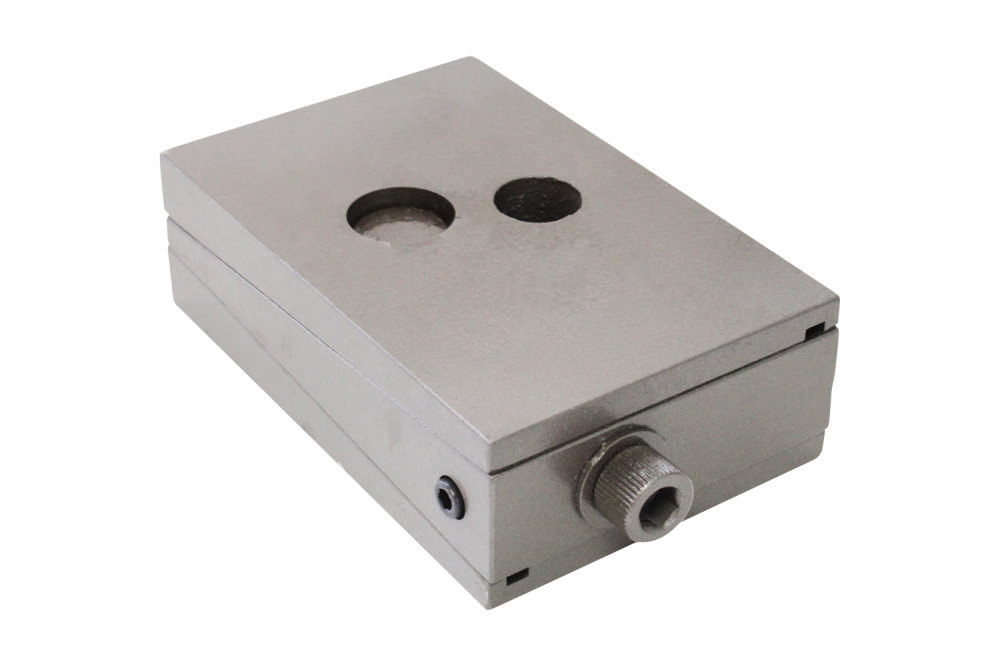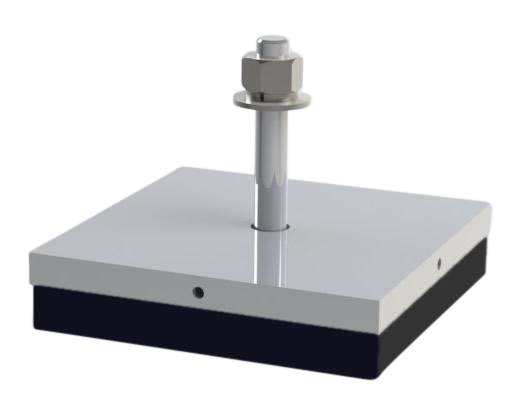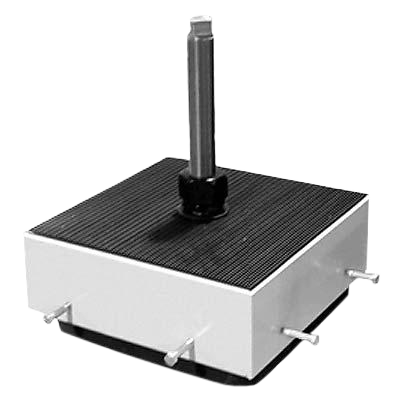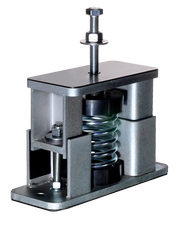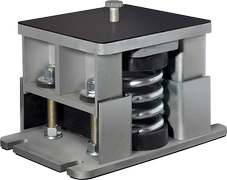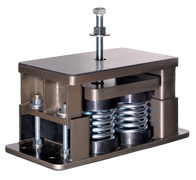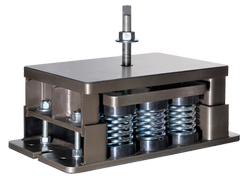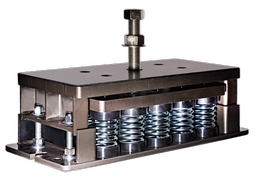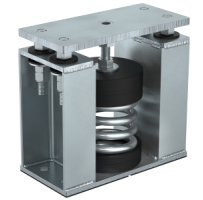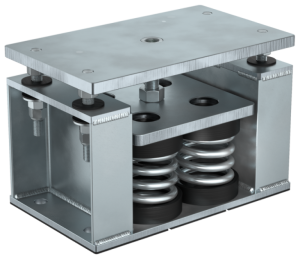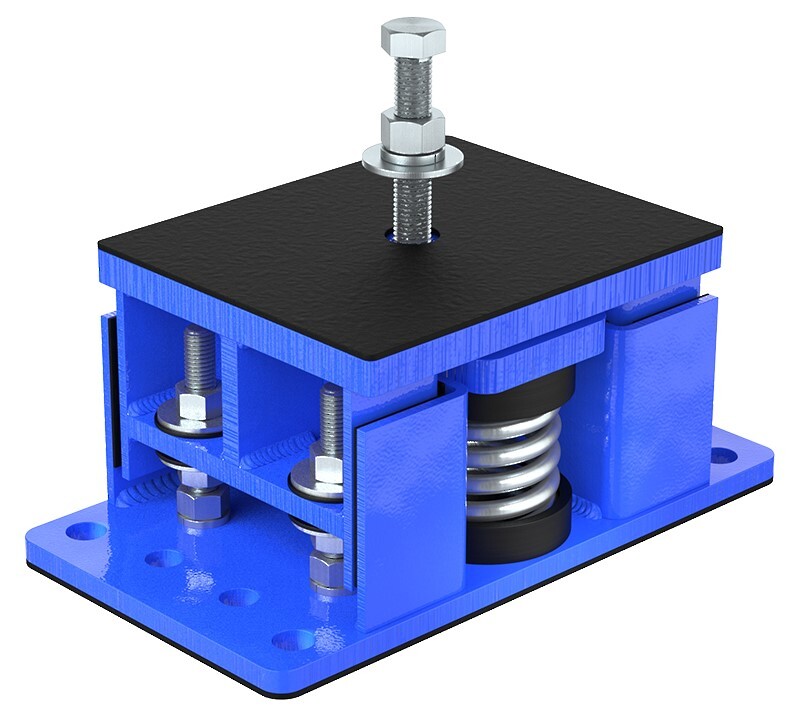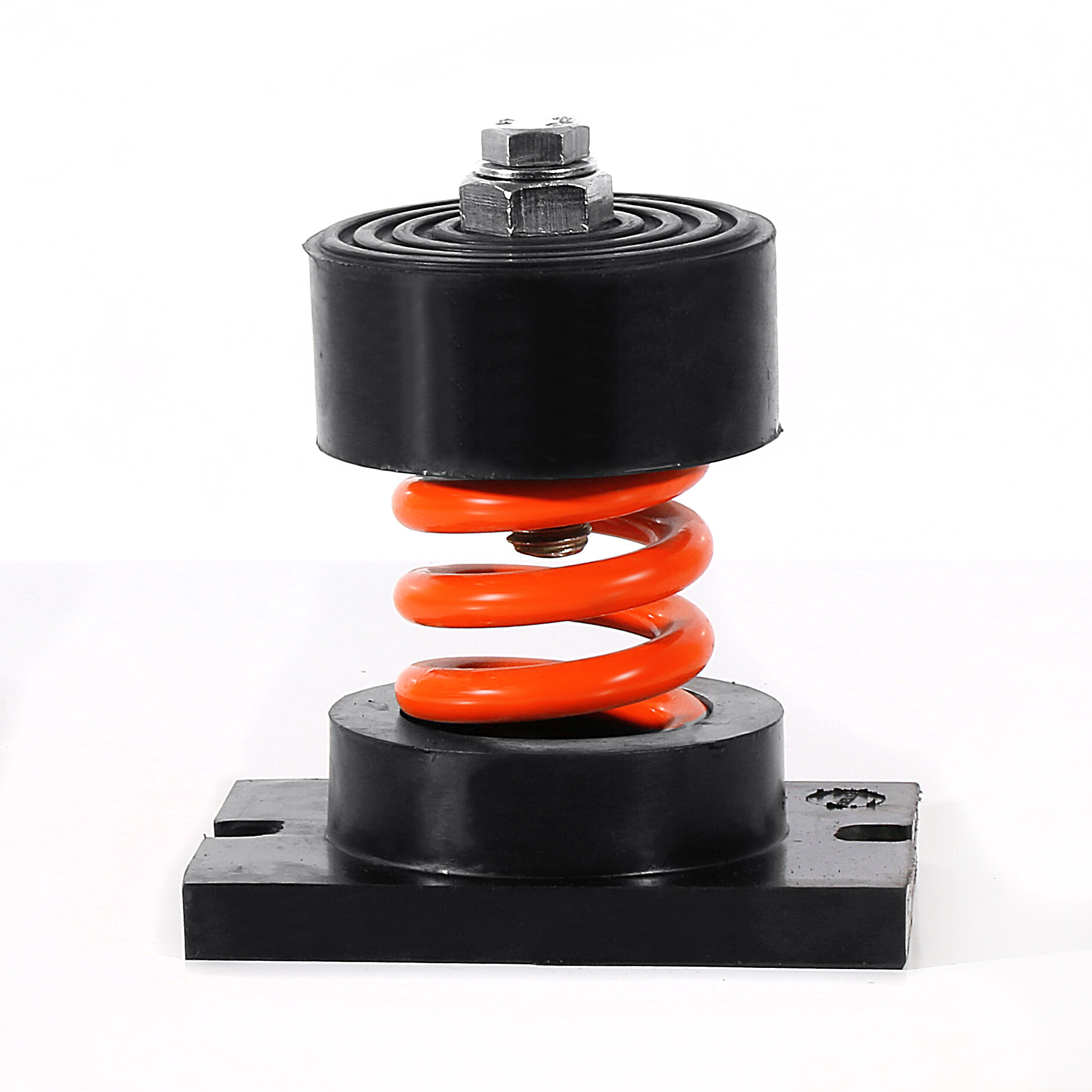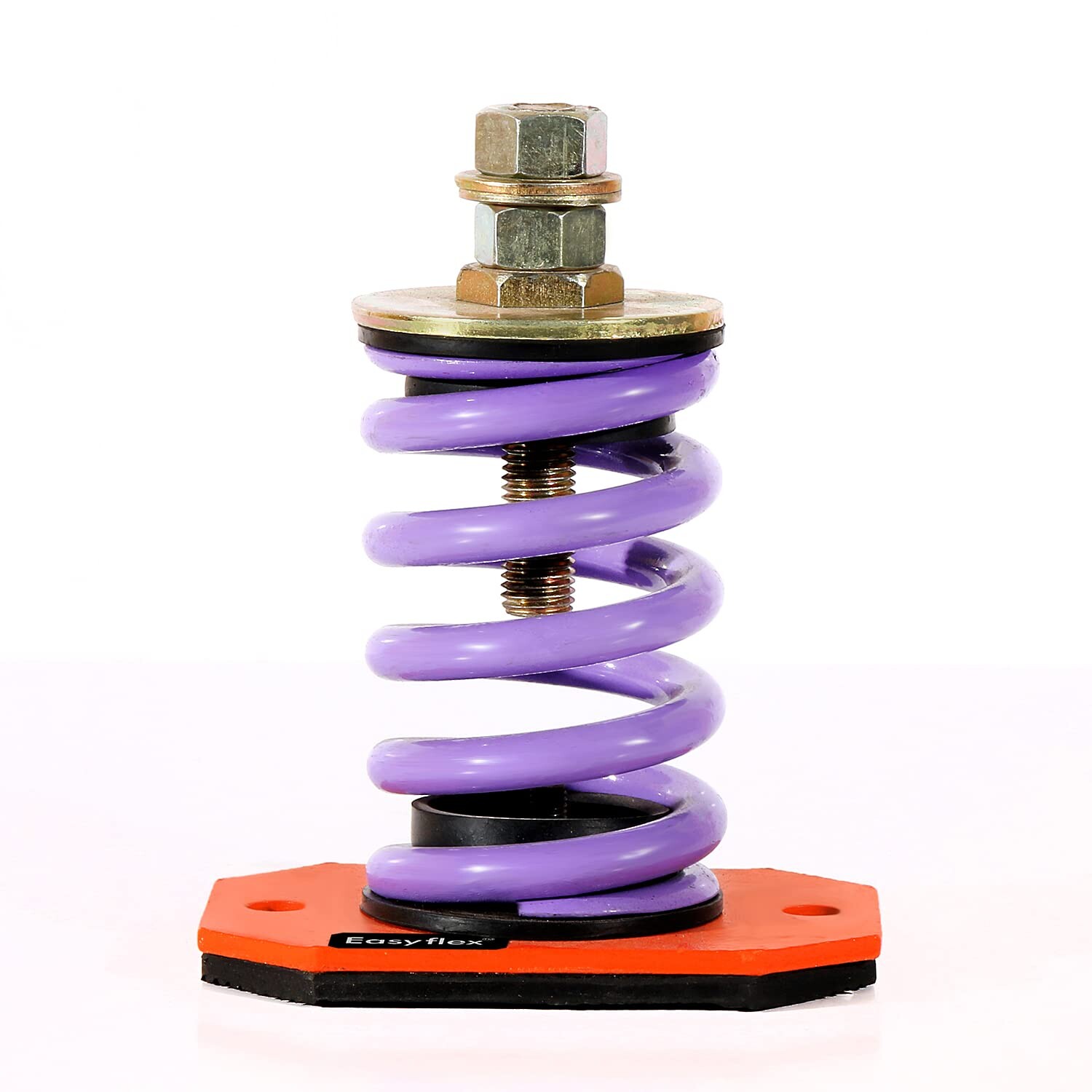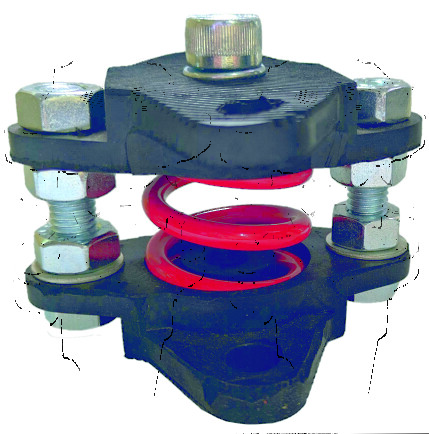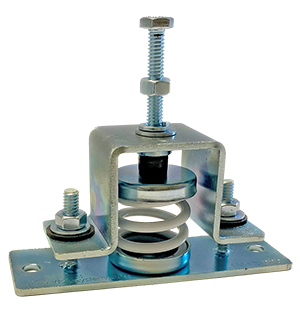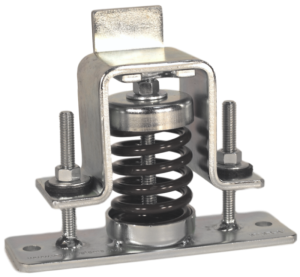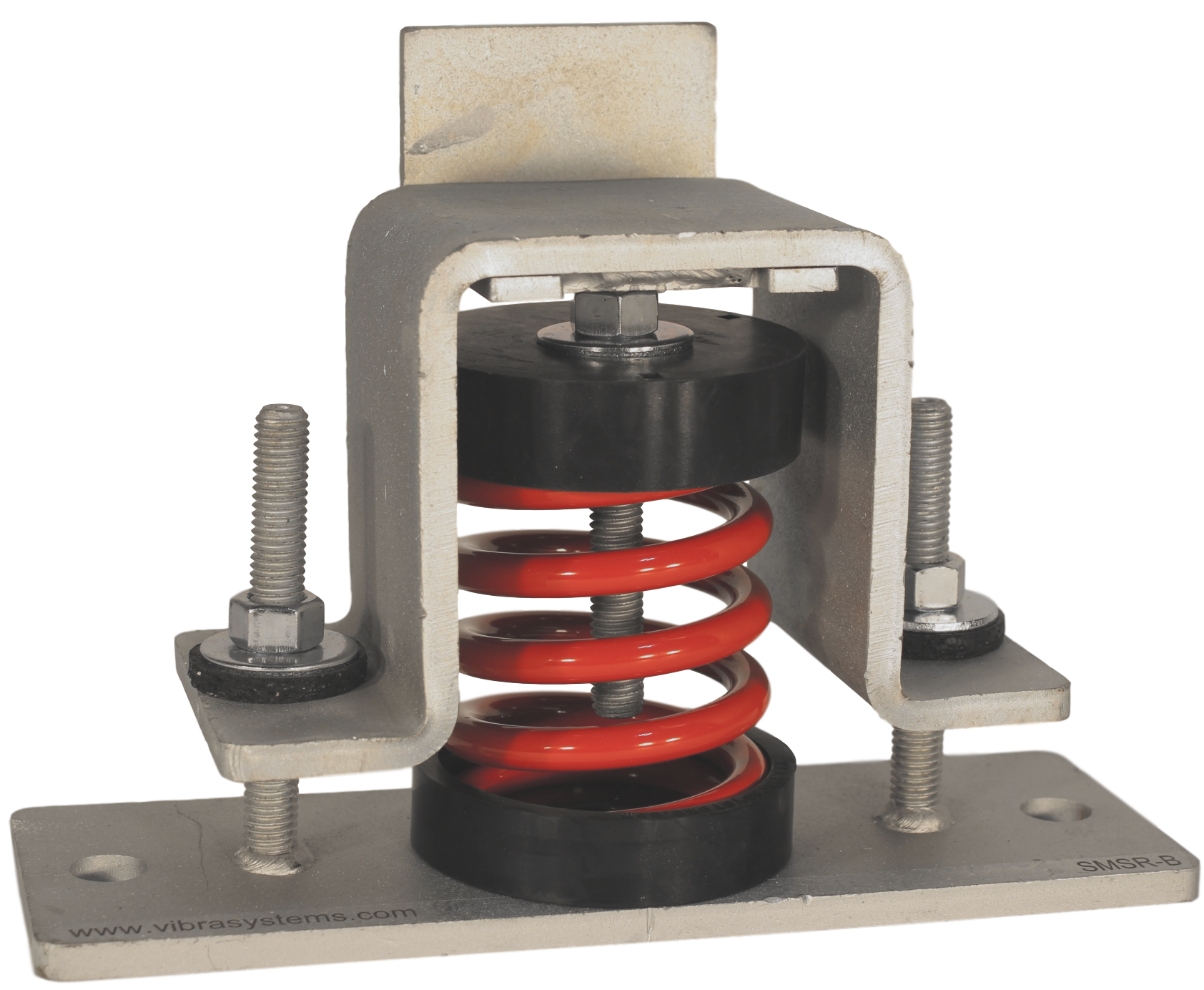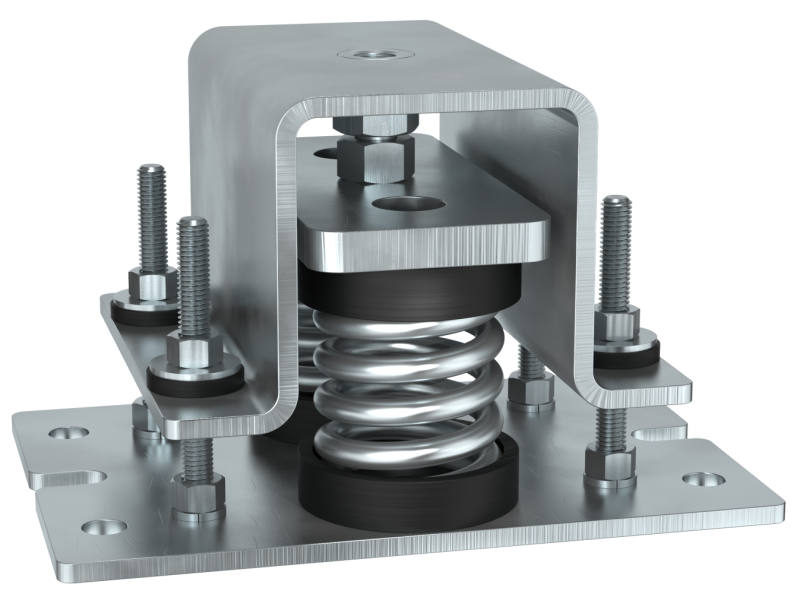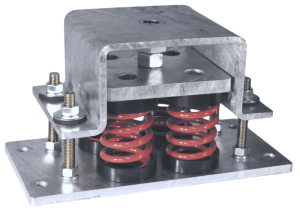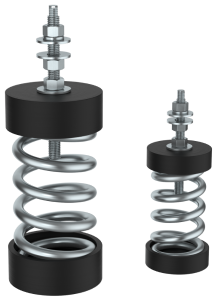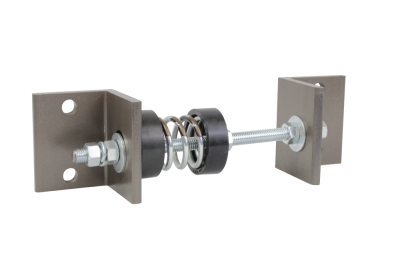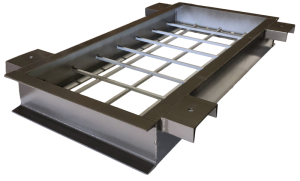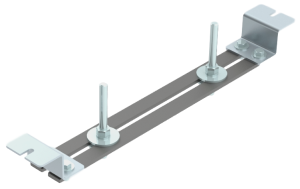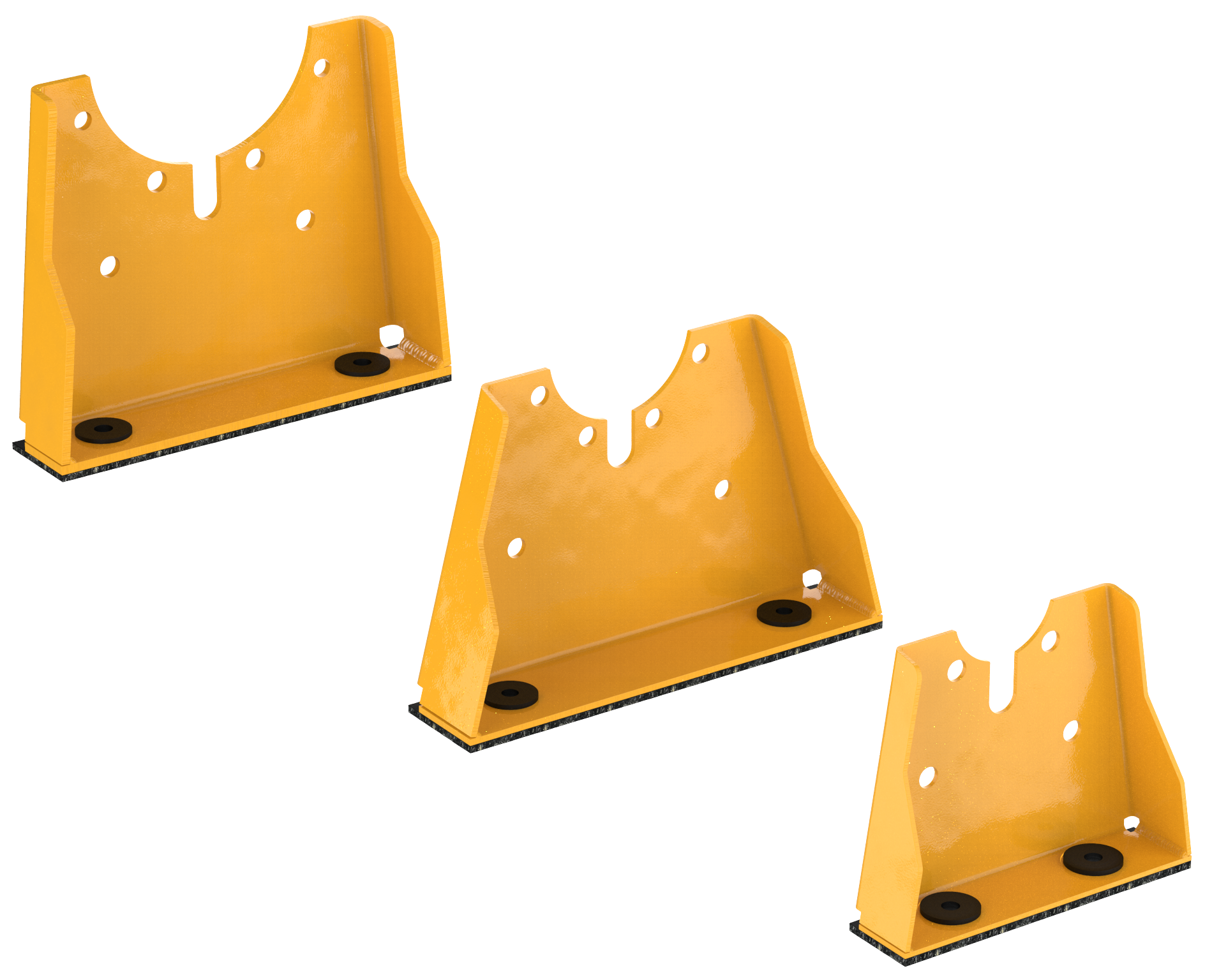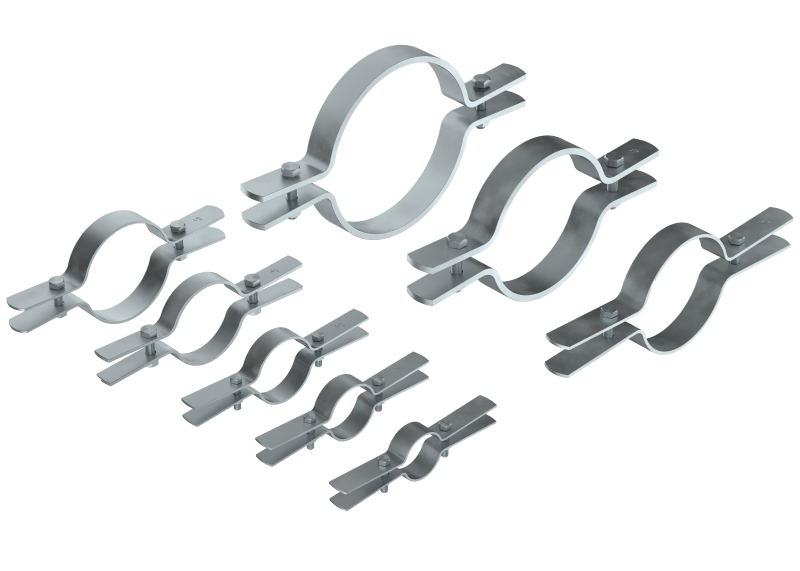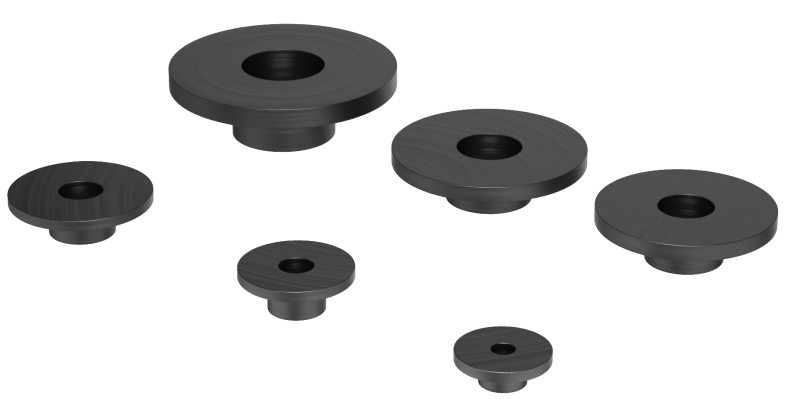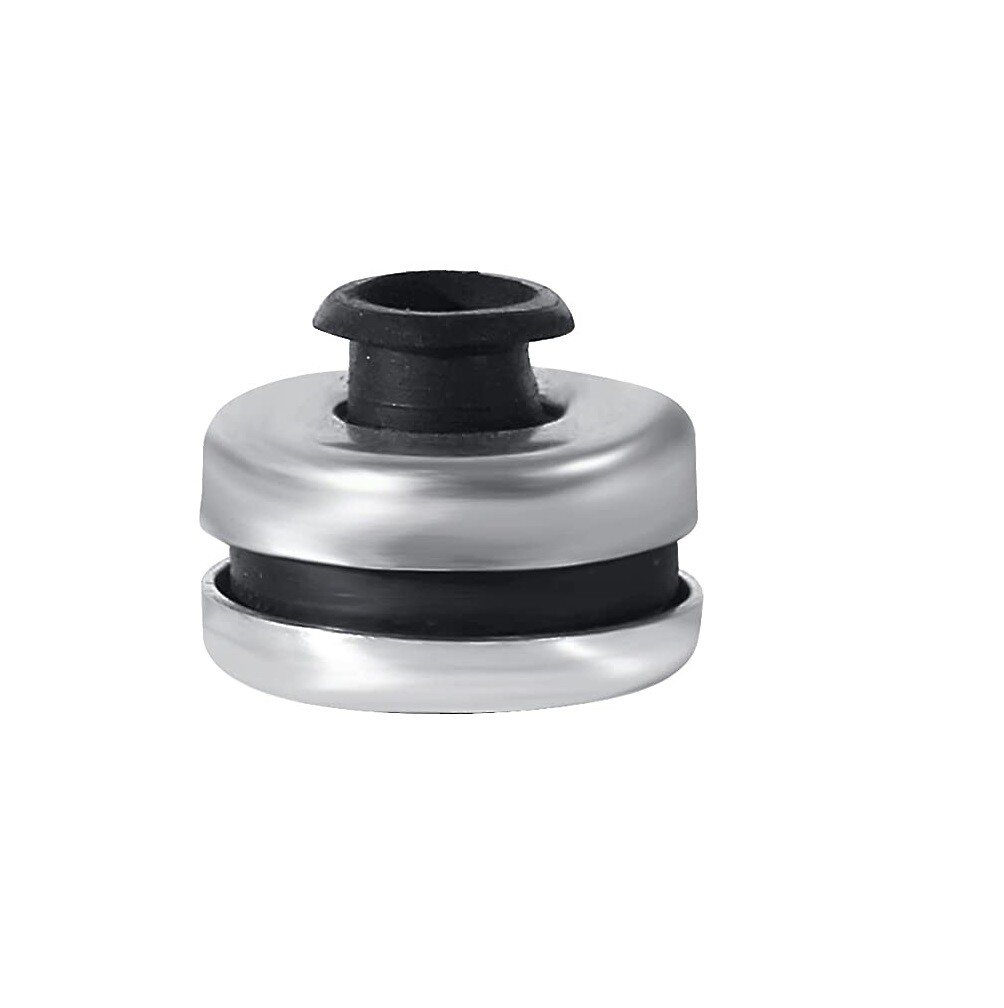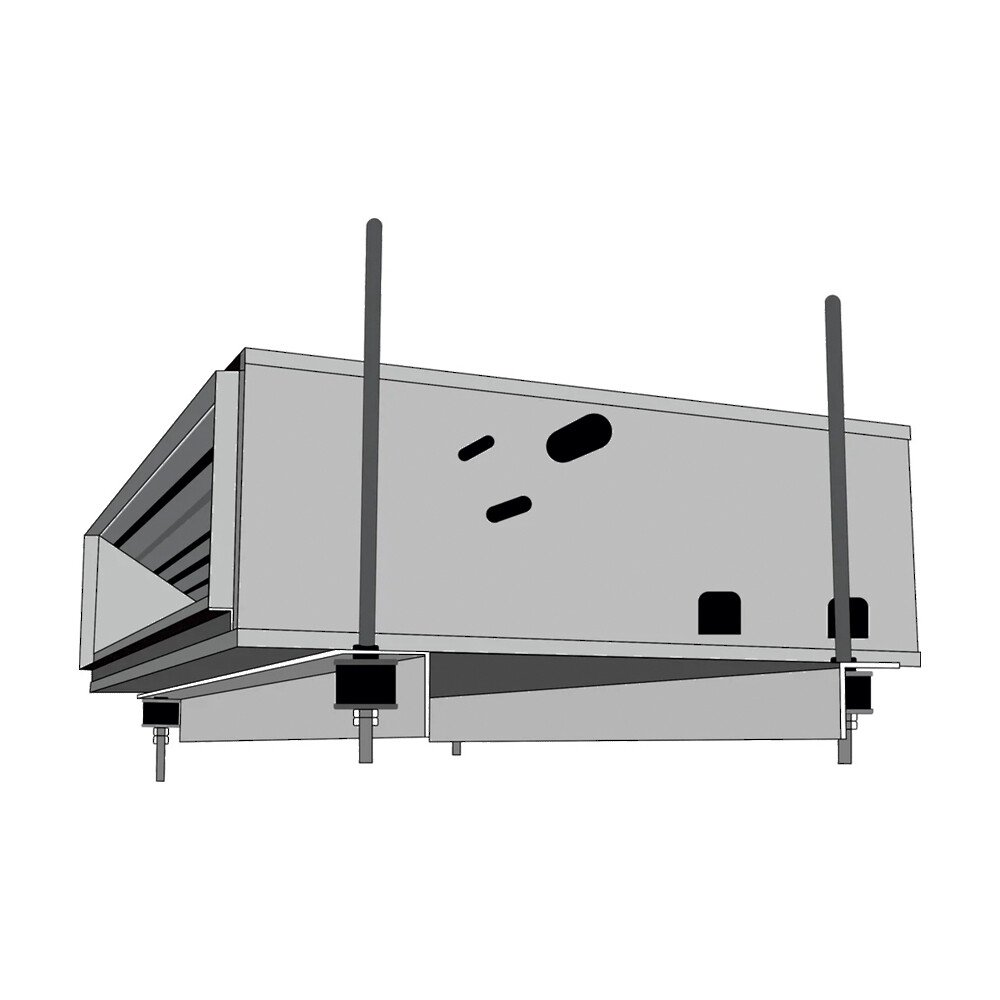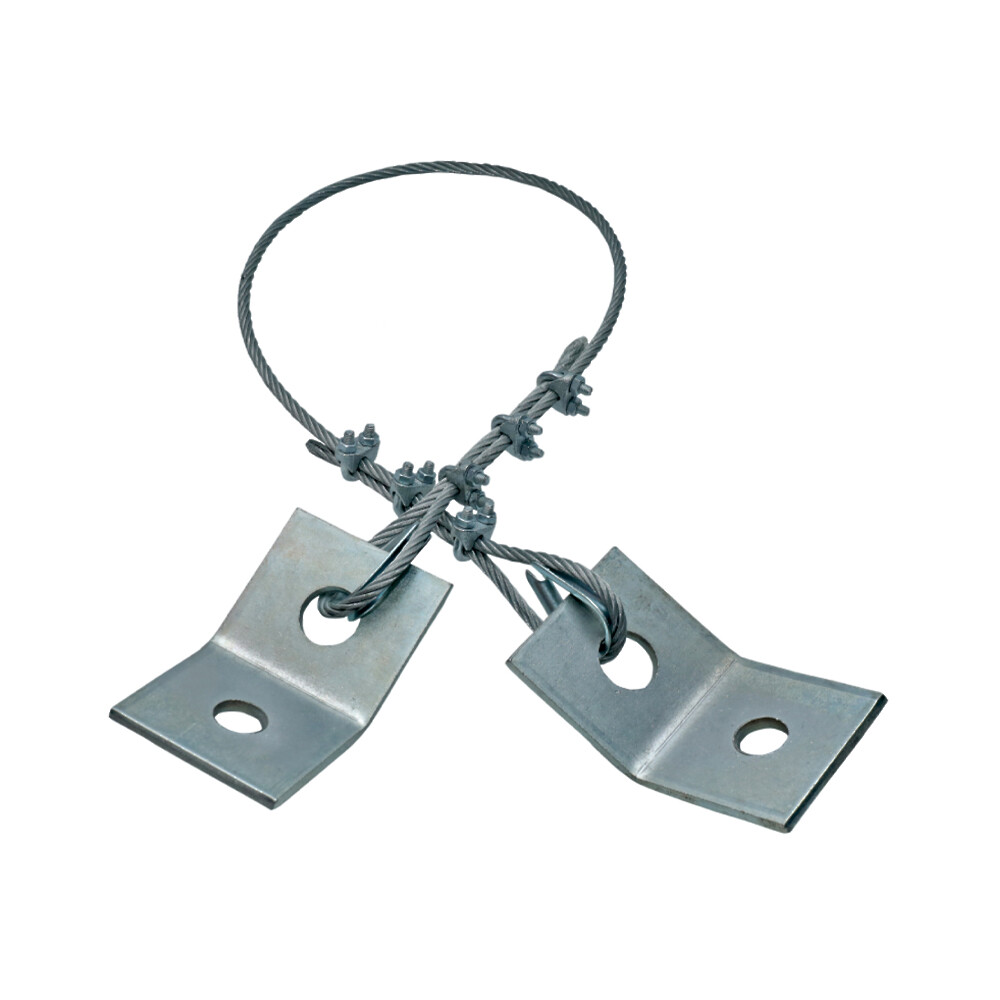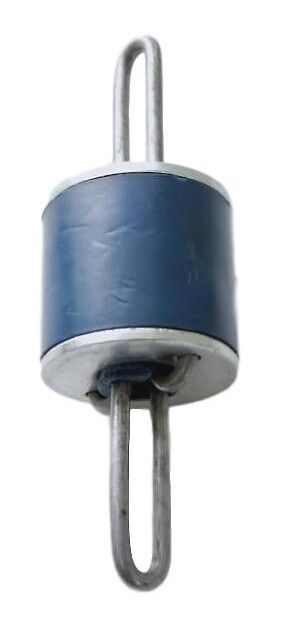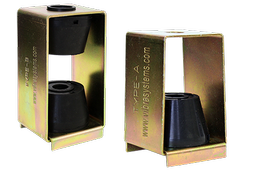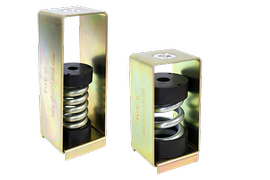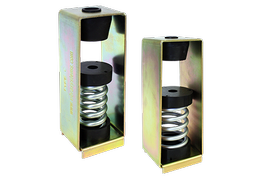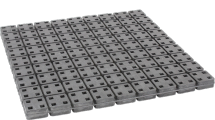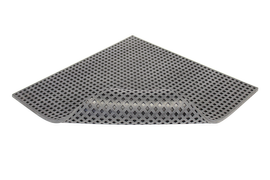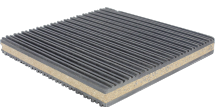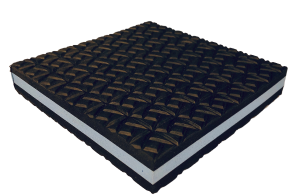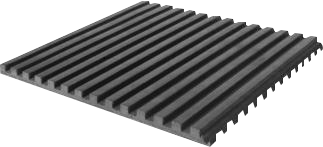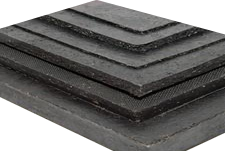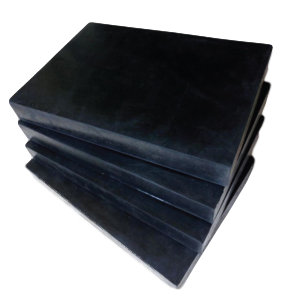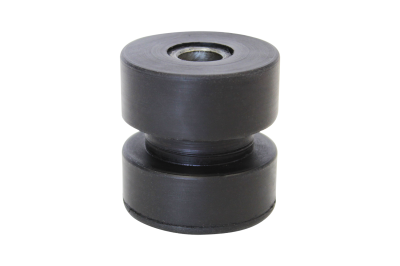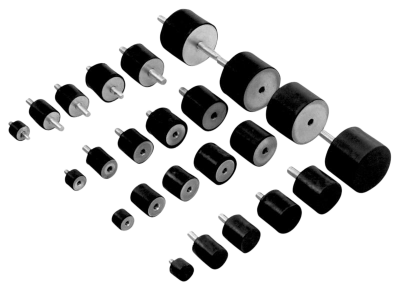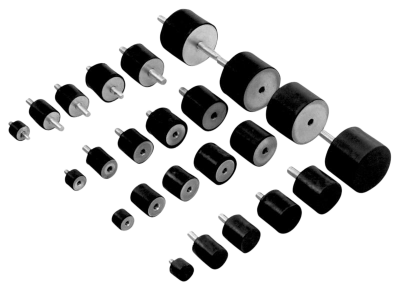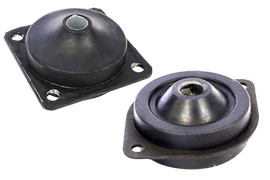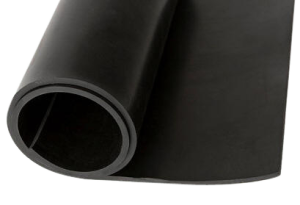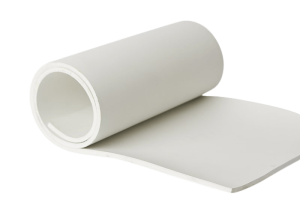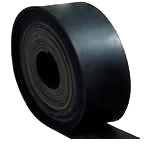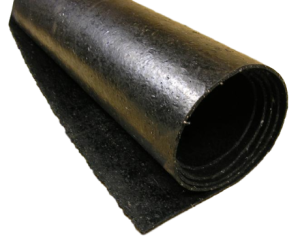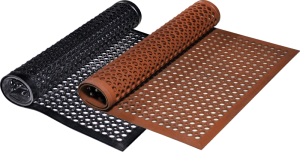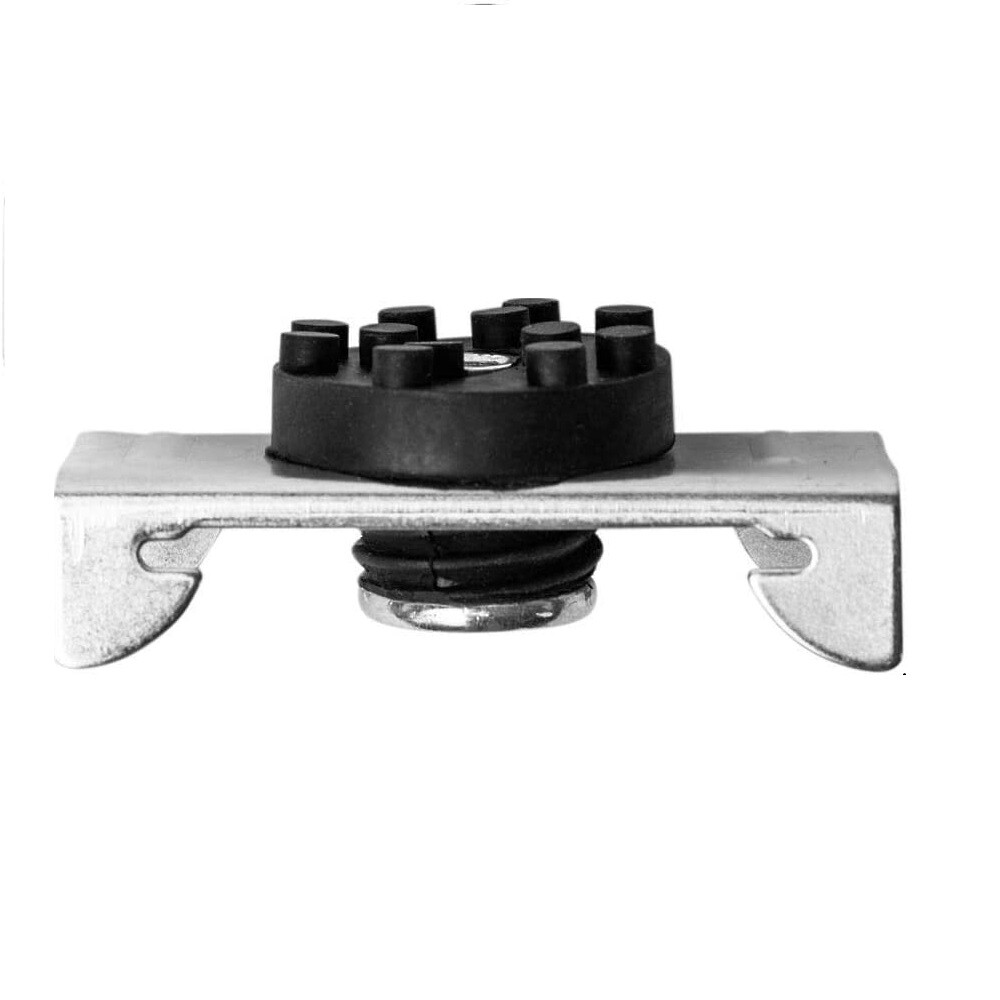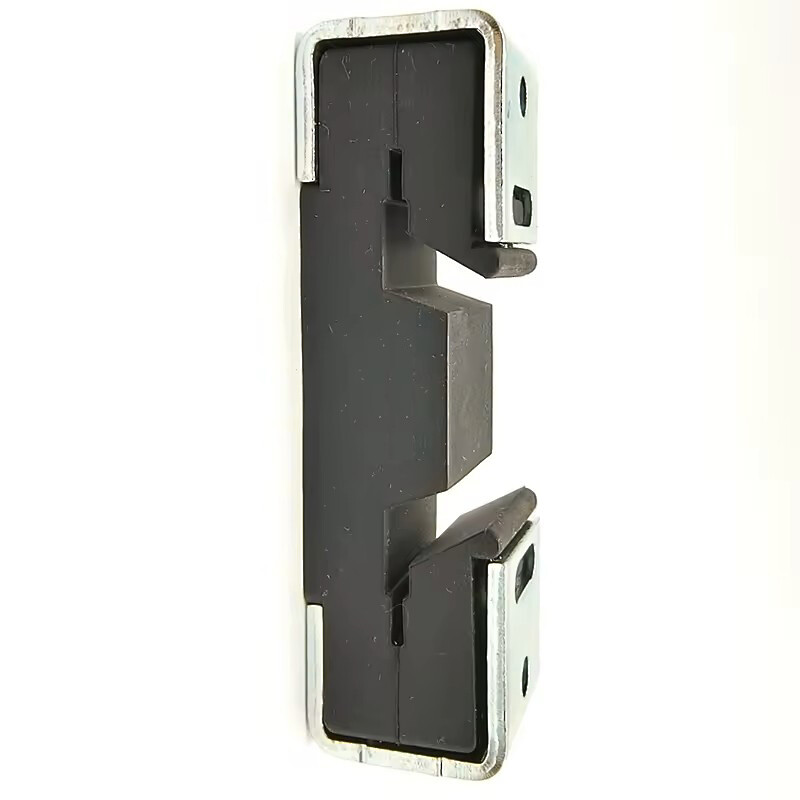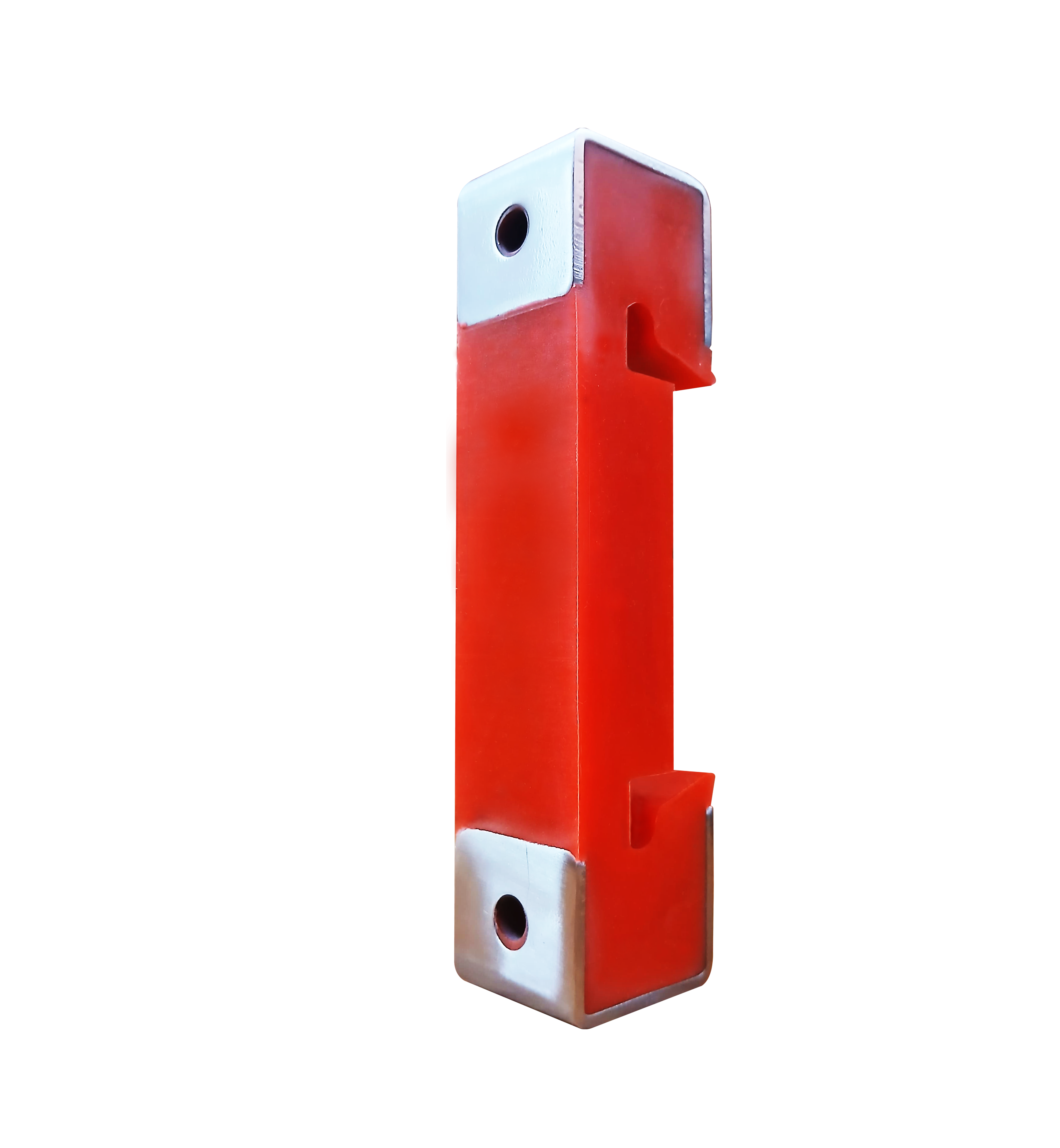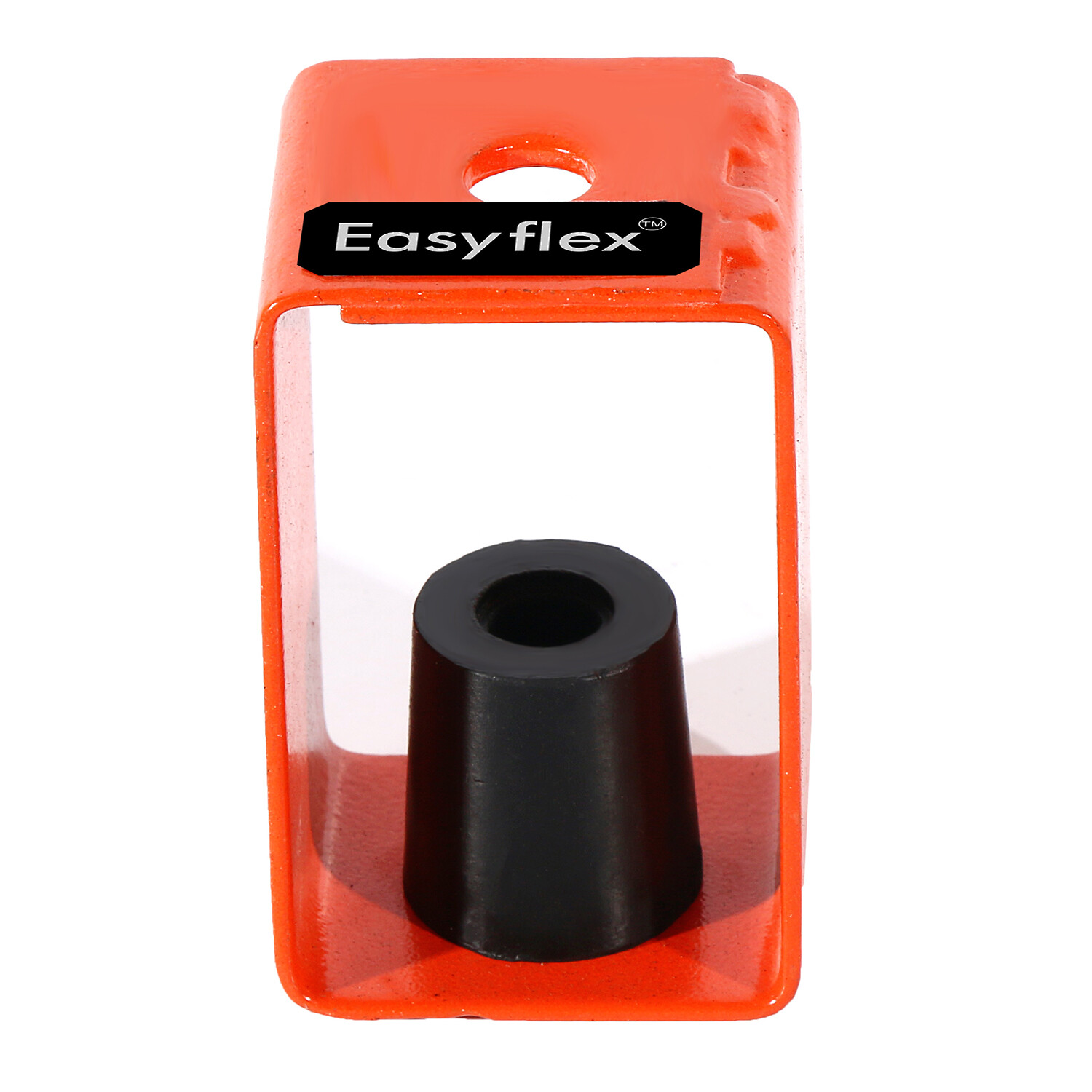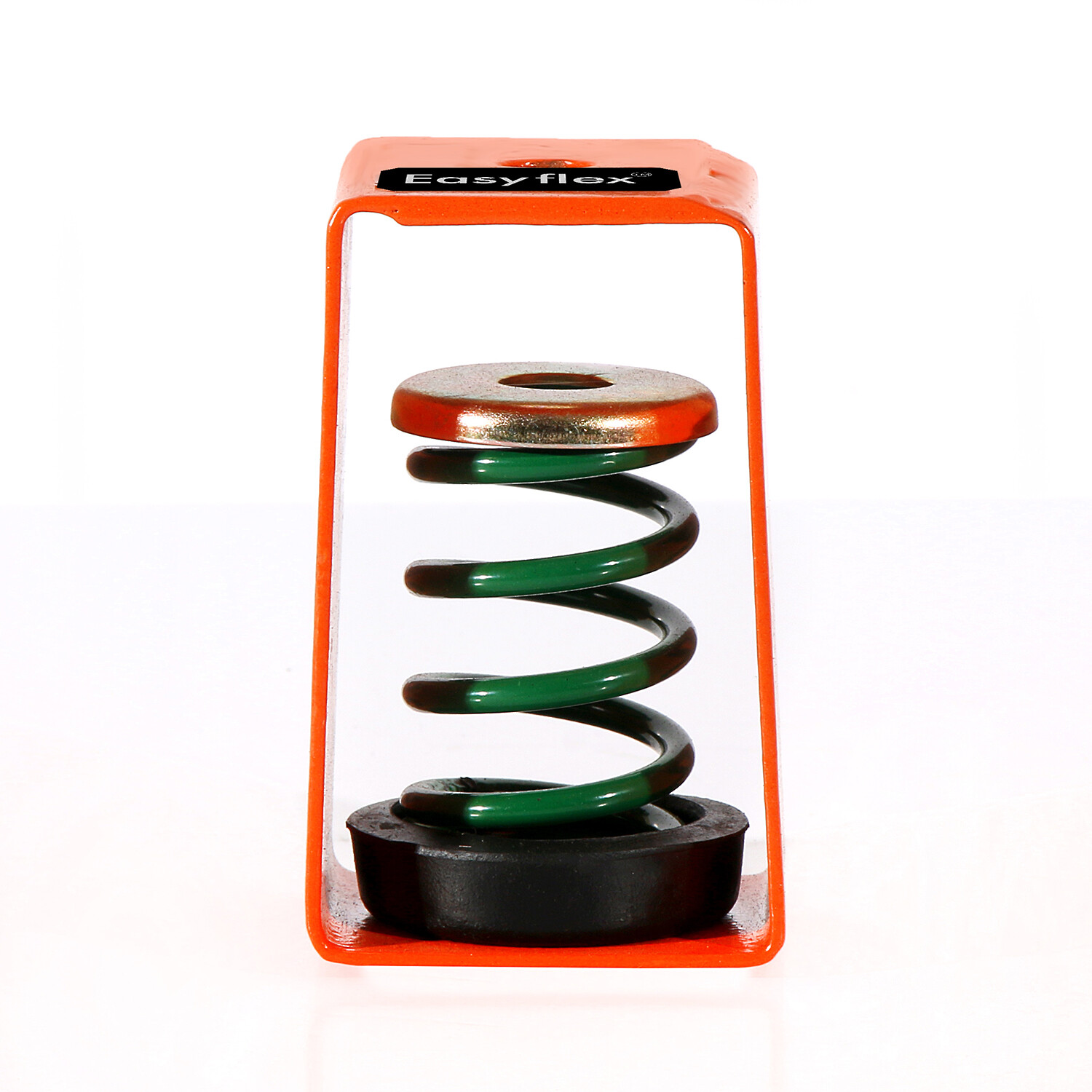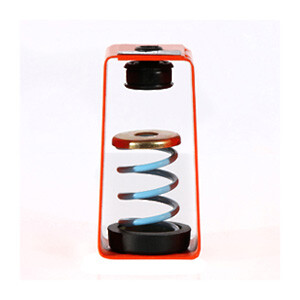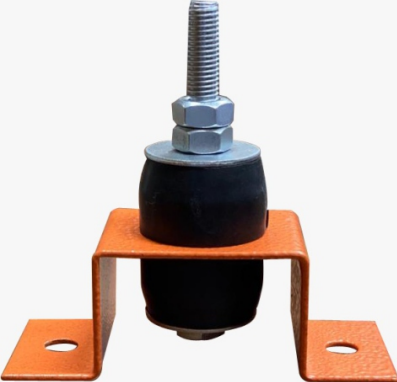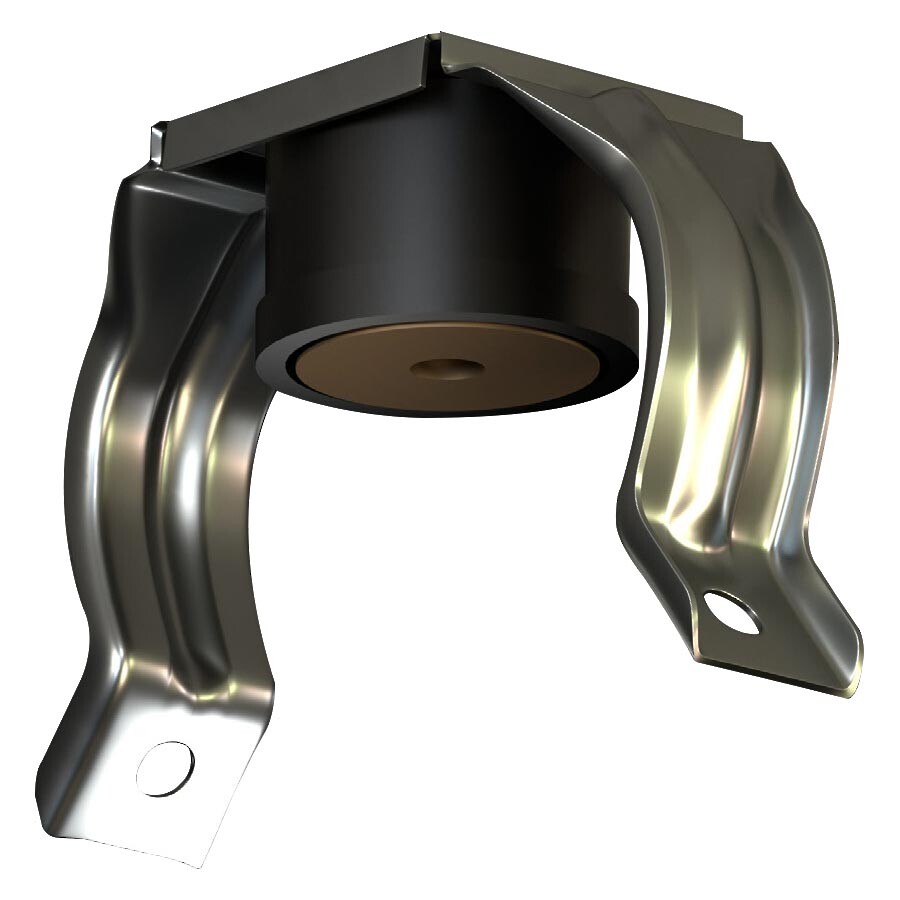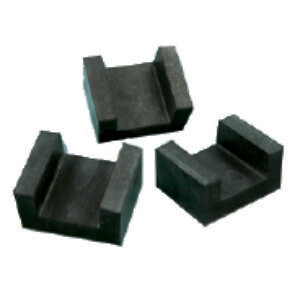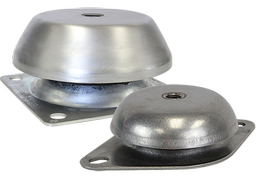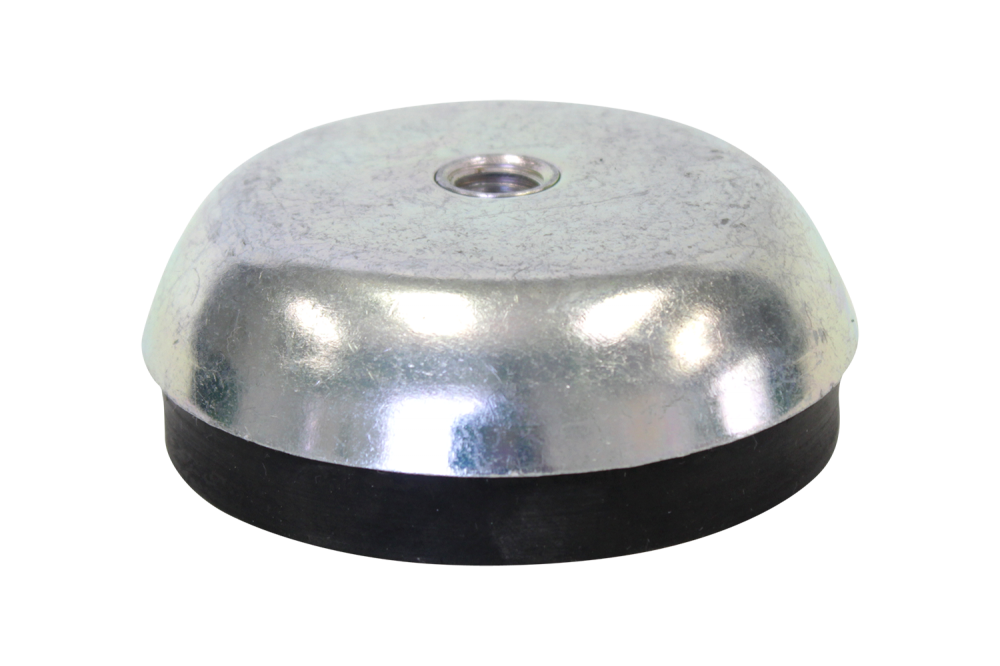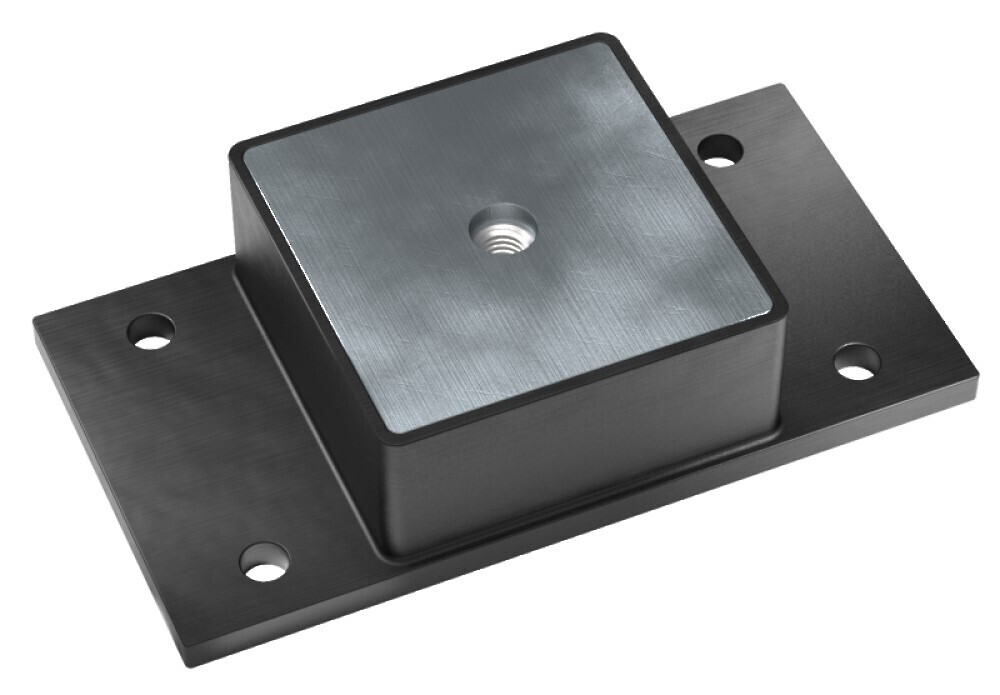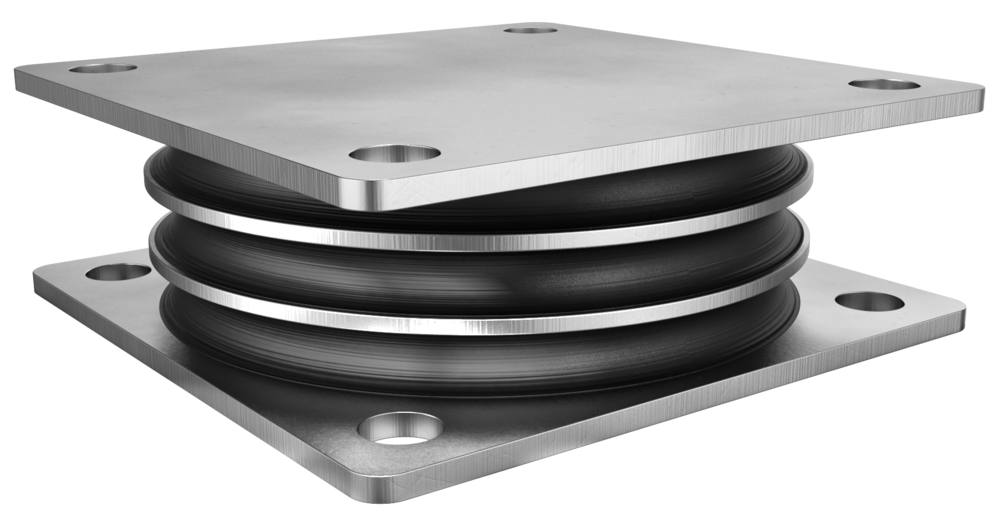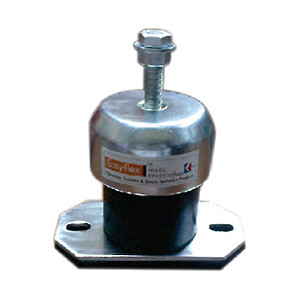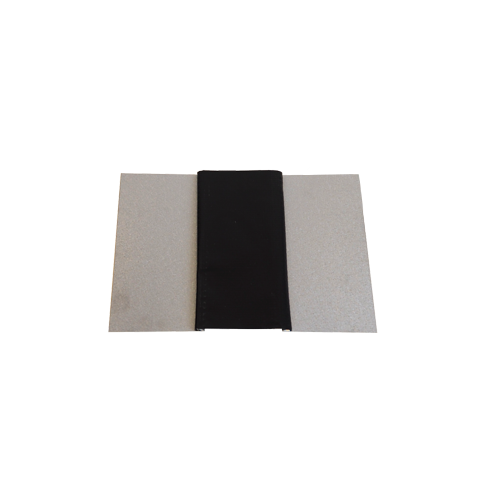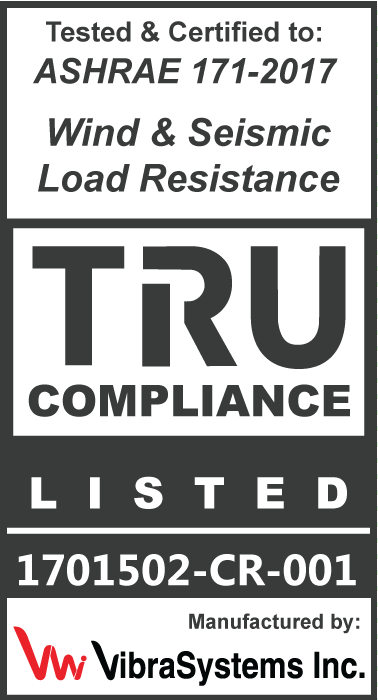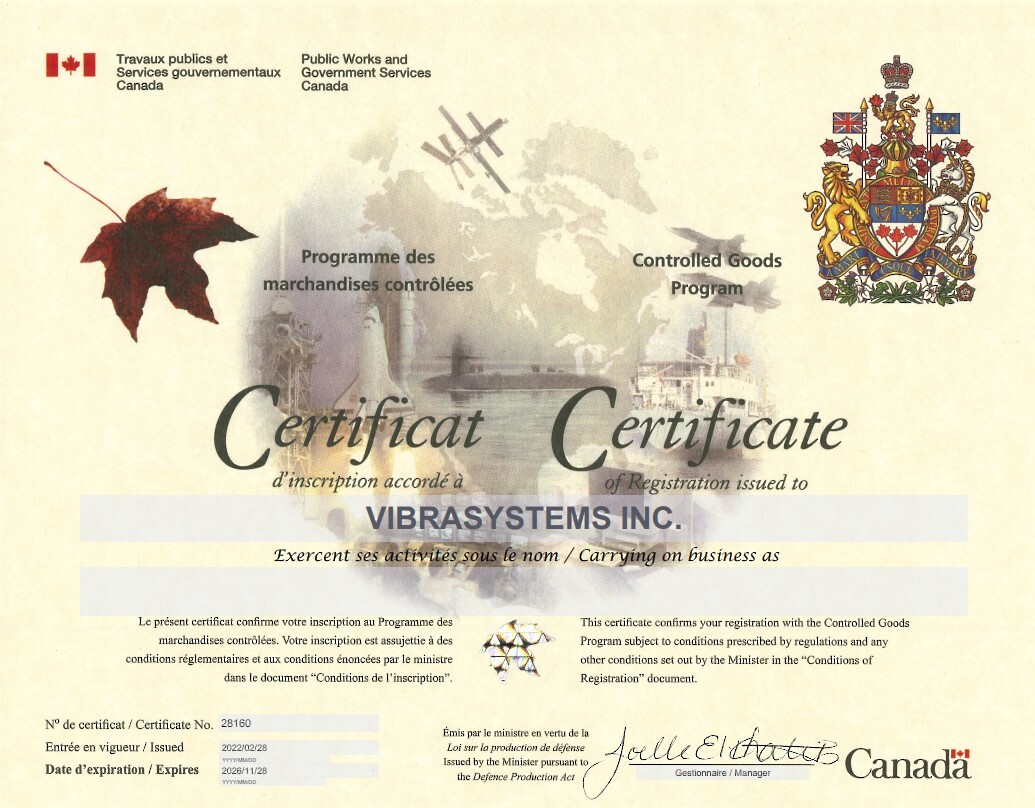Spring Vibration Isolators
Spring Vibration Isolators are used in the application where low frequency vibrations are present.
VibraSystems spring mounts are capable of withstanding loads of over 3,000lbs, and provide excellent isolation from vibration and transferring force. Commonly used applications include but not limited to: cooling towers, chillers, HVAC units, generators, pumps, and other types of equipment. Housed floor mounted spring isolators can have springs with up to 3" deflection. Bottom housing incorporate elastomeric ribbed rubber pad to prevent the vibration going downwards from the structure.
Please click on the pictures to see load capacity and general dimensions of our spring vibration isolators lines.
Applications Of Spring Vibration Isolators:
- Cooling Towers: Typically situated on the roof of a building, cooling towers are extremely heavy structures with many variables. A major one includes a shift in operating weight when it is dry versus when it is wet. Another one is wind speed since it is located at such a vantage point. The spring isolator mounts designed by Vibra Systems Inc. are always up to the task as it takes these factors into consideration.
-Chillers: These are complex systems designed for temperature control in commercial buildings. The location of the chiller in the building, its mounting, the speed of equipment as well as wind and seismic activity have to be considered before selecting an appropriate vibration-damping mount.
-OtherHVAC Equipment: These include heating devices, ventilation equipment as well as air-conditioning equipment that are a must or installed in most residential and commercial buildings. Our spring mount isolators offer efficient isolation from both vertical and horizontal forces.
All Vibrasystems Inc Spring Vibration Isolators have horizontal and vertical load testing calculation and analysis by an independent laboratory. Actual testing versus calculations is a prefered method of the design.
All spring mounts specifications contains rated load, deflection at the rated load and overload capacity calculations.
Outside Spring Diameter is designed to have not less than 80 percent of a height of the comressed spring at the rated load as per building code.
Each spring can travel for at least 50 percent more than the rated load before it can be fully closed.
Baseplates of all models are factory drilled to accomodate safe and efficient installation of the spring mount to the structure or flooring.
Is there a difference between vibration isolator and vibration damper?
Both terms are often used interchangeably but isolator and damper have a different meaning. Vibration isolator helps in preventing transferring a vibration to the structure while vibration damper is helping to dissipate the vibration energy.
Design Considerations: When selecting and designing spring vibration isolators, engineers consider factors such as the frequency and amplitude of vibrations, the weight of the isolated equipment, the required level of isolation, and the environmental conditions (temperature, humidity, etc.).
It's worth noting that while spring vibration isolators are effective for many applications, they may not provide optimal isolation in all scenarios. Depending on the specific requirements, a combination of different isolation techniques such as elastomeric pads, pneumatic isolators, and active control systems might be used.
As always, it's recommended to consult with experts in the field to determine the most suitable vibration isolation solution for your specific application. Please give us a call so we can consult you on the proper selection.


